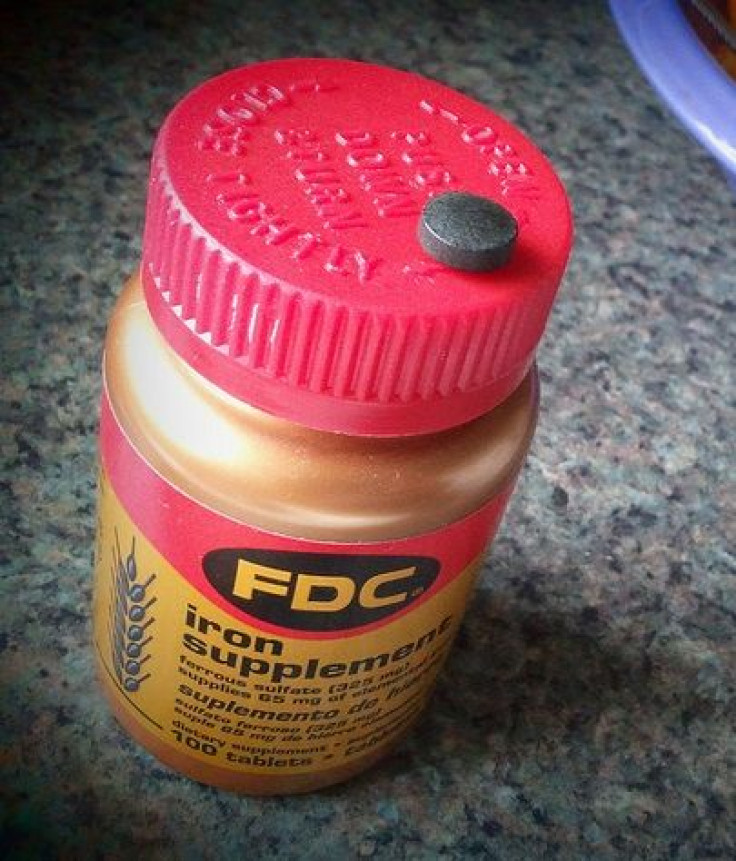Does Iron Cause Alzheimer's? Accumulation Of Iron In Brain Could Disrupt Neuronal Communication, Causing Disease To Develop

The body’s essential minerals just can’t catch a break this week. On Monday, a study found that copper accumulations within the brain could promote the development of Alzheimer’s disease. Now, another study suggests that iron is the actual offender.
Iron, just like copper, is essential to the proper functioning of the human body. It is a part of enzymes that help digestion, and also allows muscles to store and use oxygen. Someone with an iron deficiency is susceptible to anemia, delayed motor functioning, and fatigue.
Previous studies have also implicated iron in the onset of Alzheimer’s. A study from last year determined that a protein known as tau, which helps stabilize the structure of neurons, also helped regulate the accumulation of iron in the brain. Among mice without the protein, Alzheimer’s developed as iron levels rose, according to The Wall Street Journal. But Dr. George Bartzokis, professor of psychiatry at the Semel Institute for Neuroscience and Human Behavior at UCLA, has theorized that it begins much further “upstream” in one of the first areas of the brain to be affected by Alzheimer’s, the hippocampus.
Iron's Influence On Alzheimer's Development
Bartzokis's theory is based on the idea that iron-rich cells called oligodendrocytes, which produce myelin, the electrically insulating layer that covers neuronal axons, spread the abundance of iron during production. However, too much iron can cause oxidative damage in the myelin, making neurons unable to communicate. Bartzokis says that these mechanisms predicate the buildup of plaque, which in turn causes more myelin to be destroyed in a cycle that becomes the progression of the disease.
To test this, Bartzokis and his team used magnetic resonance imaging (MRI) technology to measure the amount of iron stored in the brain protein, ferritin, in 31 Alzheimer’s patients and 68 healthy control participants. They found that higher-than-normal iron levels in the hippocampus were associated with tissue damage, but not in the thalamus, where the disease eventually progresses. Previously, it may have been difficult to detect iron in the brain, Bartzokis says, because water “masked” its presence as levels increased with the breaking down of cells.
"It is difficult to measure iron in tissue when the tissue is already damaged," Bartzokis said in a statement. "But the MRI technology we used in this study allowed us to determine that the increase in iron is occurring together with the tissue damage. We found that the amount of iron is increased in the hippocampus and is associated with tissue damage … The results suggest that iron accumulation may indeed contribute to the cause of Alzheimer's disease."
Possible Solutions And Iron Management
Although both iron and copper have been implicated in the onset of Alzheimer’s disease, it’s very difficult to know how much is too much or too little. The researchers said that modifying environmental factors, including diet or dietary supplements, can help. They also noted that pharmaceutical companies are developing medications that will help attract extra iron and remove it from tissue.
According to the Centers for Disease Control and Prevention, recommended daily intake of iron is 18 milligrams per day. For reference, you can see a list below of 10 common foods and their iron content.
· Lentils: 3.3 mg per 1/2 cup
· Cooked oysters: 10.2 mg per three ounces
· Fortified dry cereals: 1.8 to 21.1 mg per one ounce
· Oysters: 10.2 mg per three ounces, cooked
· Freshly cooked spinach: 3.2 mg per 1/2 cup
· Clams: 23.8 mg per three ounces, canned and drained
· Chickpeas: 2.4 mg per 1/2 cup, cooked
· Ground beef: 2.2 mg per three ounces, 15 percent fat, cooked
· Lamb shoulder: 2.3 mg per three ounces, cooked
· White beans: 3.9 mg per 1/2 cup, canned
Source: Bartzokis G, Heydari P, Tishler T, et al. Increased Iron Levels and Decreased Tissue Integrity in Hippocampus of Alzheimer’s Disease Detected in vivo with Magnetic Resonance Imaging. Journal of Alzheimer’s Disease. 2013.



























